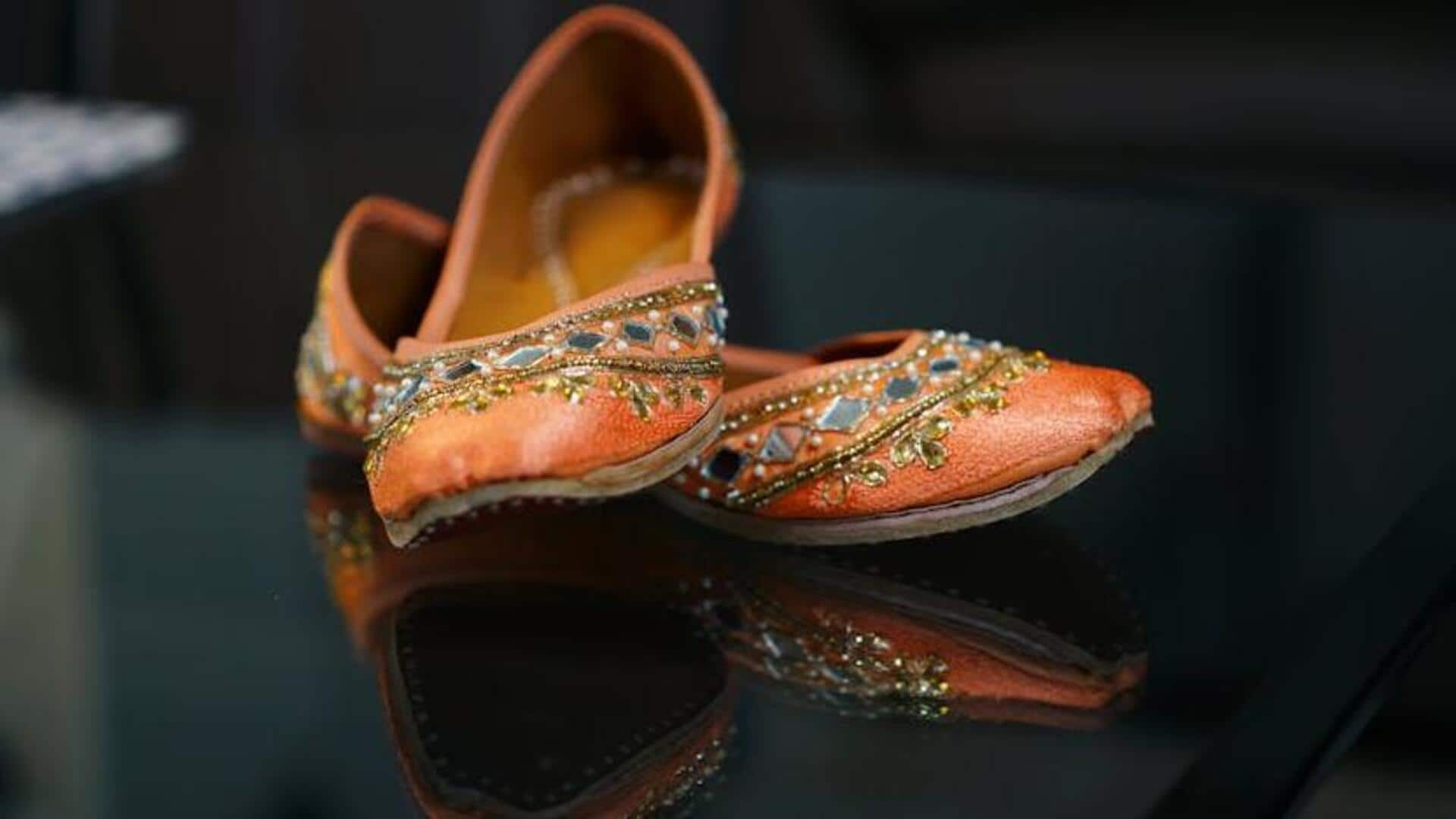
Tracing footsteps of traditional Indian and Japanese footwear
What's the story
Delving into the world of traditional footwear reveals a vibrant tapestry of cultural heritage in both India and Japan. These nations boast a rich history of unique shoe designs, each a reflection of their customs, traditions, and ways of life. In this article, we explore the intriguing realm of traditional Indian and Japanese footwear, shedding light on their origins, distinctive styles, and cultural importance.
Juttis
The elegance of Indian juttis
Hailing from the Indian subcontinent, juttis (traditional Indian footwear) hold a special place in Indian culture, with roots tracing back hundreds of years. Crafted from high-quality leather and embellished with elaborate embroidery, these shoes captivate with their explosion of colors and patterns. Both men and women traditionally wear juttis. They pair perfectly with ethnic outfits, hence, they're the go-to for weddings and festivals.
Geta
The versatility of Japanese geta
Geta are traditional Japanese wooden sandals that raise the wearer a bit off the ground, keeping their feet dry and clean. Distinguished by their wooden base and fabric thong, geta are typically paired with yukata (casual summer kimono) or other traditional Japanese clothing. This design allows for plenty of air circulation around the feet - perfect for Japan's hot and humid summers.
Padukas
Padukas: India's ancient footwear
Padukas are the most ancient footwear of India, with a history spanning several millennia. They are primarily wooden footwear comprising a flat sole with a post and knob, which is held between the toes. Notably, padukas carry deep religious connotations in Hindu culture, often linked with deities and saints. Their simple design symbolizes the renunciation of worldly comforts, mirroring the ascetic path followed by many spiritual leaders in India.
Zori
Zori: The formal sandals of Japan
Zori are traditional Japanese sandals made of rice straw or lacquered wood, with a flat sole that tapers to a point at the toe. Distinguished from the elevated geta, zori provide a more elegant look for formal settings, often worn with kimono or hakama. Comfort has been improved with the use of modern materials like rubber, while still retaining their traditional appearance.
Craftsmanship
Craftsmanship behind traditional footwear
The production of authentic Indian juttis entails the expertise of seasoned artisans who carefully hand-stitch each pair, ensuring that the techniques inherited from past generations are kept alive. Likewise, in Japan, the art of making geta involves a meticulous process—from the careful chiseling of the wooden base to the firm fastening of the thong, each step reflects the exceptional craftsmanship deeply rooted in the cultural heritage of these societies.